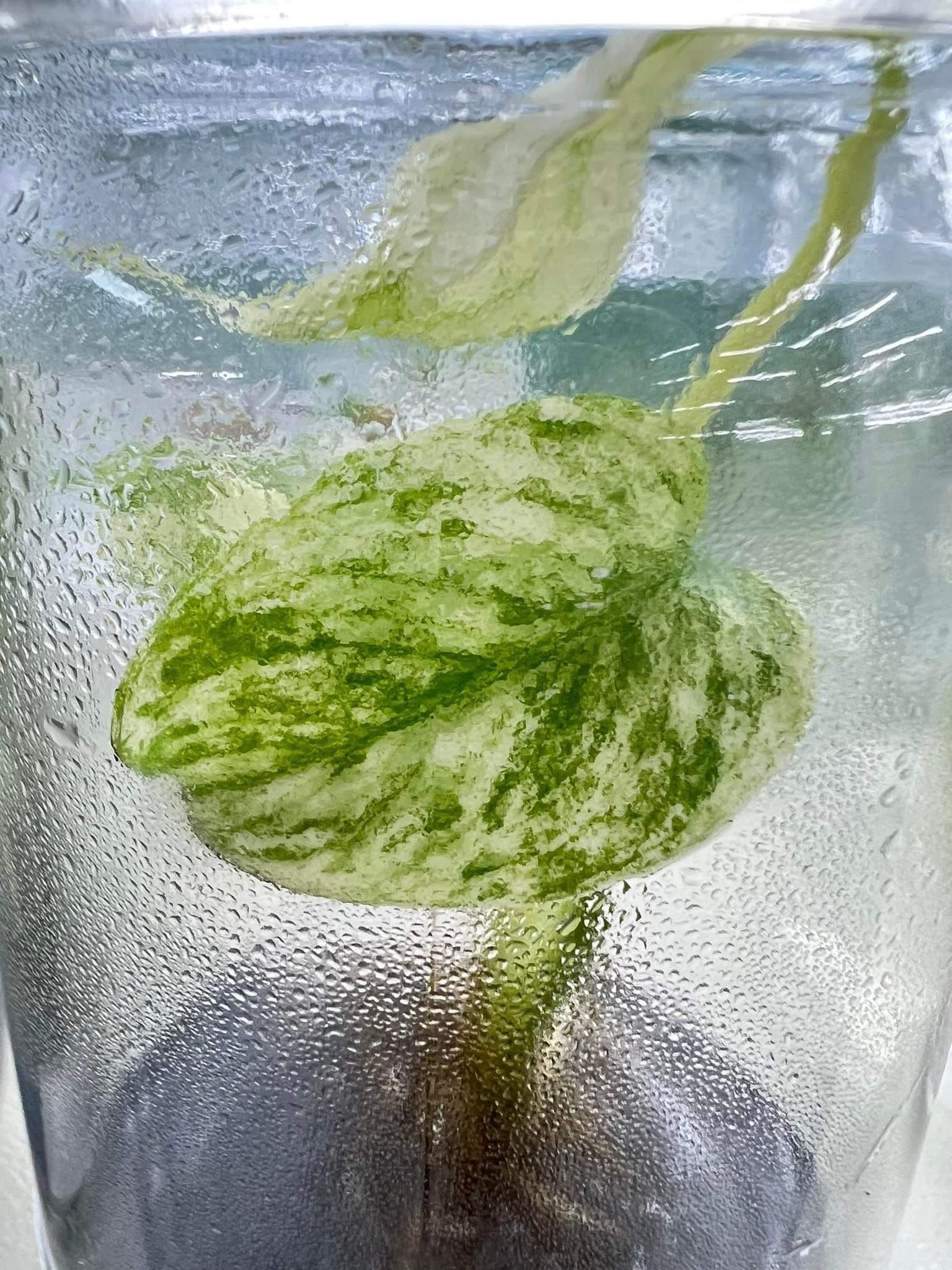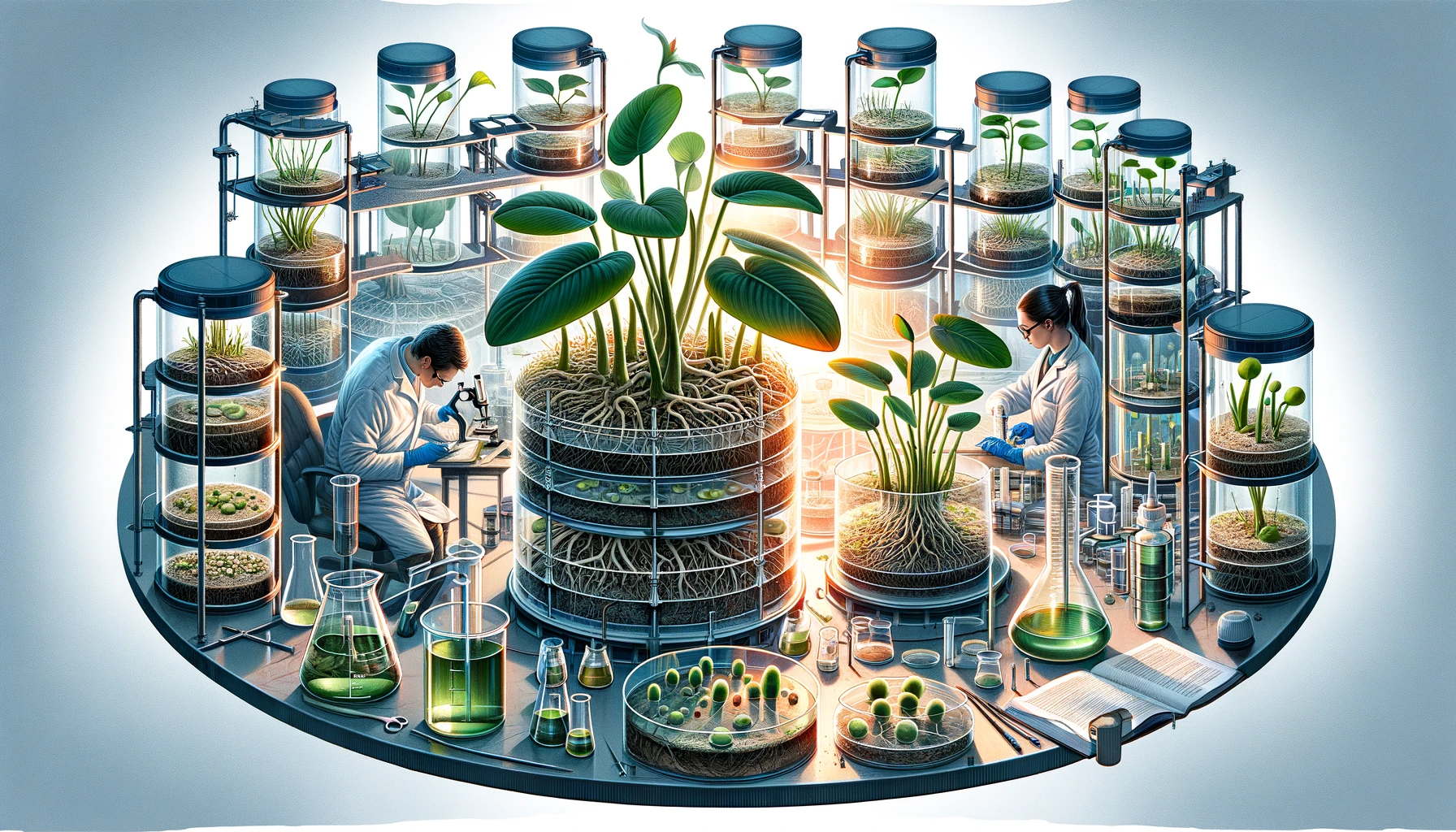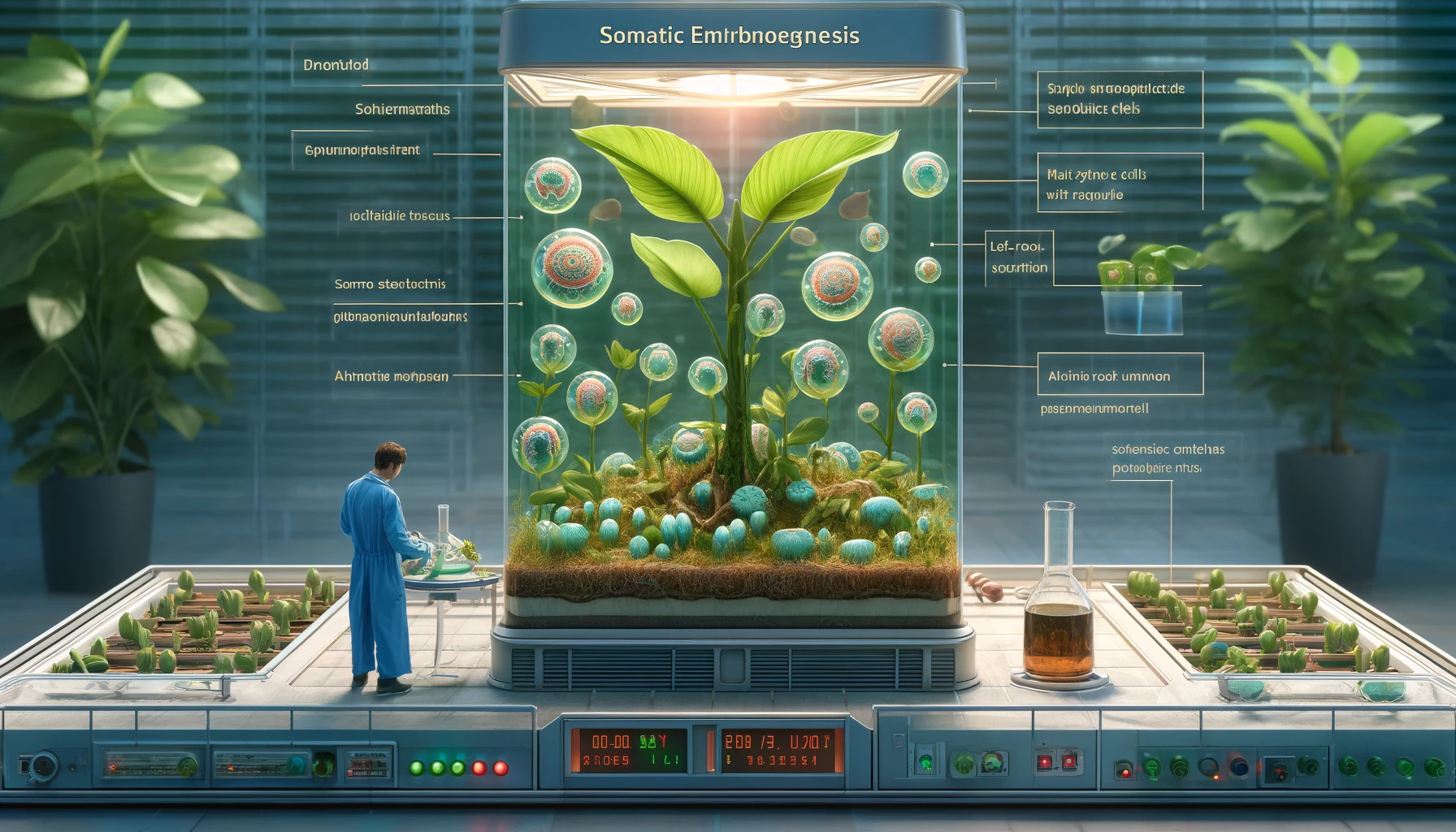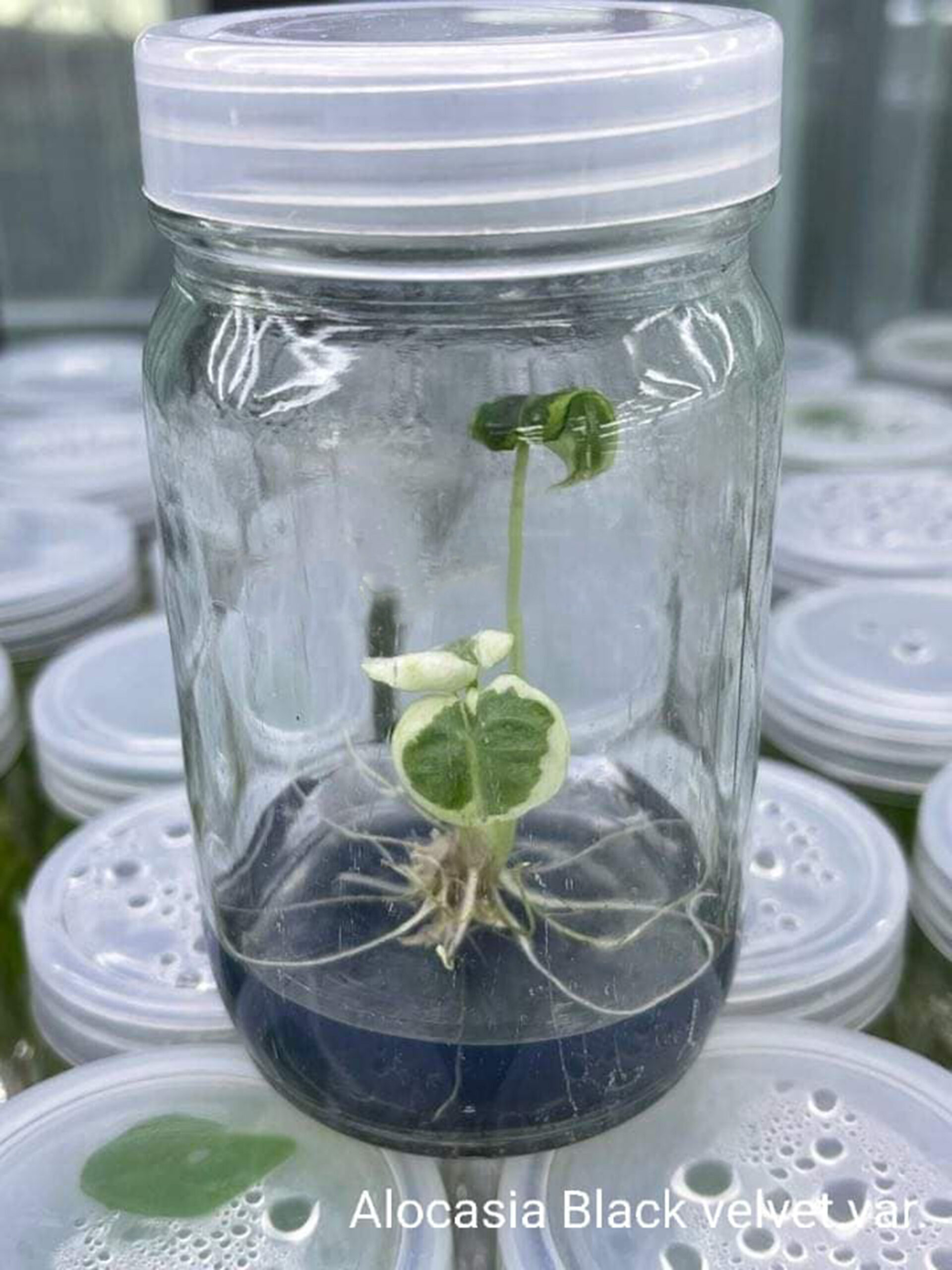Aroids, a diverse family of flowering plants known for their striking foliage and unique inflorescences, have captivated plant enthusiasts for centuries. The captivating beauty of these plants, combined with their relatively easy care requirements, has fueled their popularity as indoor and outdoor ornamentals. But for passionate collectors and breeders, the desire for rare cultivars and novel hybrids often outpaces the availability of traditional propagation methods. That’s where tissue culture comes in. This sophisticated and versatile technique offers a pathway to mass-produce plants rapidly and efficiently, while preserving genetic consistency and battling disease transmission. In the realm of aroid cultivation, tissue culture has emerged as a valuable tool for commercial production, research, and dedicated hobbyists alike.

Micropropagation: A Foundation for Aroid Propagation
At the core of tissue culture lies micropropagation, a technique that exploits the remarkable ability of plants to regenerate new individuals from isolated fragments of their tissues. This process involves culturing plant cells, tissues, or organs in a sterile, controlled environment, where they can be coaxed into producing whole, new plants. Micropropagation leverages basic principles of plant physiology, manipulating the conditions of light, nutrients, and hormones to trigger specific developmental responses.

Explant Selection and Preparation
The success of micropropagation begins with the selection and preparation of the starting material, known as the explant. Aroids offer a diverse range of explant sources, including shoot tips, nodal segments, root tips, and even leaves. The choice of explant depends on factors such as the specific aroid species, the desired propagation objectives, and the availability of plant material. Proper surface sterilization and aseptic handling are crucial to prevent microbial contamination and ensure the survival and growth of the explant.
Media Composition and Optimization
The culture medium, a nutrient-rich substrate, plays a pivotal role in micropropagation. Aroid species may require specific media formulations, as their nutritional and growth regulator needs can vary significantly. The media typically contains macronutrients, micronutrients, vitamins, and plant growth regulators, which are carefully balanced to support the desired developmental responses, such as shoot proliferation, root formation, or somatic embryogenesis. Optimizing the media composition is an ongoing process, as it can significantly impact the success and efficiency of the micropropagation protocol.
Shoot Proliferation and Rooting
One of the primary goals of micropropagation is to induce the rapid multiplication of shoots, a process known as shoot proliferation. This is achieved by culturing the explant on media supplemented with specific growth regulators, such as cytokinins, which stimulate the formation of additional shoots. Once the shoots have developed, they can be separated and transferred to a rooting medium, where auxins promote the formation of adventitious roots. This cyclical process of shoot proliferation and rooting allows for the exponential increase in the number of plantlets produced.
Acclimatization and Hardening Off
The final stage of micropropagation involves the transition of the in vitro-derived plantlets to the ex vitro environment, a process known as acclimatization or hardening off. During this phase, the plants are gradually exposed to lower humidity, increased light intensity, and altered nutrient availability, allowing them to adapt to the conditions of the natural environment. Successful acclimatization is crucial for the long-term survival and growth of the regenerated aroid plants.
Somatic Embryogenesis: An Alternative Propagation Pathway
Somatic embryogenesis is another powerful tissue culture technique that holds significant potential for aroid propagation. This process involves the induction of embryo-like structures, called somatic embryos, from non-zygotic (somatic) cells, such as those derived from leaf, root, or stem explants. Somatic embryogenesis offers several advantages over traditional micropropagation, including the potential for rapid, large-scale plant production and the possibility of genetic manipulation for the creation of novel aroid varieties.

Induction of Somatic Embryos
The induction of somatic embryos is a complex process that requires the careful manipulation of culture conditions and the application of specific growth regulators. Explants are typically cultured on media containing a balance of auxins and cytokinins, which trigger the dedifferentiation of somatic cells and their subsequent redifferentiation into embryo-like structures. The optimization of this process is crucial, as it can vary significantly among different aroid species and cultivars.
Embryo Maturation and Conversion
Once the somatic embryos have been induced, they must undergo a maturation phase, where they develop distinct structures, such as the shoot and root meristems. This stage is often facilitated by adjusting the culture medium, reducing the levels of growth regulators, and providing appropriate environmental conditions. The final step involves the conversion of the mature somatic embryos into complete, self-sustaining plantlets, which can then be hardened off and transplanted to the desired growing environment.
Applications of Somatic Embryogenesis
Somatic embryogenesis holds great promise for the propagation of rare or difficult-to-propagate aroid cultivars. It also opens up opportunities for genetic engineering and the development of novel aroid varieties with desirable traits, such as improved disease resistance or unique foliage characteristics. Additionally, somatic embryos can be cryopreserved, allowing for the long-term storage and conservation of valuable genetic resources.
Shoot Proliferation: Enhancing Aroid Production
Shoot proliferation, a specialized form of micropropagation, focuses on the rapid and continuous multiplication of shoot meristems. This technique is particularly well-suited for the large-scale production of aroid plants, as it can generate vast quantities of uniform, genetically identical individuals in a relatively short timeframe.

Axillary Shoot Induction
The foundation of shoot proliferation is the induction of axillary shoot formation. By culturing explants, such as nodal segments or shoot tips, on media enriched with cytokinins, the dormant axillary buds can be stimulated to break and produce new shoots. The careful optimization of cytokinin type and concentration is crucial, as different aroid species may respond differently to these growth regulators.
Shoot Multiplication and Subculturing
Once the initial axillary shoots have formed, they can be separated and subcultured onto fresh media, initiating a cycle of continuous shoot production. This process of repeated subculturing allows for the exponential increase in the number of shoots, ultimately leading to the mass propagation of aroid plants. Maintaining the balance of nutrients, growth regulators, and other environmental factors is essential to ensure the long-term proliferation and genetic stability of the shoot cultures.
Rooting and Acclimatization
After the desired number of shoots has been generated, they can be transferred to a rooting medium, typically containing auxins to stimulate the formation of adventitious roots. Once the plantlets have developed a robust root system, they can be gradually acclimated to the ex vitro environment, following a similar process as in traditional micropropagation.
Conclusion
Tissue culture techniques, particularly micropropagation, somatic embryogenesis, and shoot proliferation, have become invaluable tools in the propagation and conservation of aroid plants. These sophisticated methods offer a pathway to rapidly produce large quantities of genetically uniform, disease-free plants, catering to the diverse needs of commercial growers, researchers, and passionate hobbyists alike. As the demand for rare and novel aroid cultivars continues to grow, the application of these advanced propagation techniques will undoubtedly play a crucial role in meeting the needs of the ever-evolving aroid horticulture industry.
FAQs
1. What are the advantages of using tissue culture for propagating aroids?
Tissue culture offers several advantages for aroid propagation:
- Rapid multiplication: Large numbers of plants can be produced quickly from a single explant.
- Disease-free plants: Tissue culture eliminates many pathogens, leading to healthier plants.
- Preservation of rare or endangered species: Tissue culture can help conserve and propagate aroids that are difficult to propagate through traditional methods.
- Genetic uniformity: Tissue culture produces clones, which is beneficial for maintaining desirable traits.
2. What are the main steps involved in aroid tissue culture?
The general steps in aroid tissue culture include:
- Explant selection and sterilization: Choosing suitable plant material (e.g., leaf sections, stem segments) and sterilizing it to remove contaminants.
- Establishment of culture: Placing the sterilized explant onto a culture medium containing nutrients and plant growth regulators.
- Multiplication: Subculturing the explant to encourage multiple shoot formation.
- Rooting: Transferring the shoots to a rooting medium to induce root development.
- Acclimatization: Gradually adapting the plantlets to normal environmental conditions.
3. What are the common types of tissue culture used for aroids?
- Meristem culture: Uses the shoot tip meristem to produce virus-free plants.
- Callus culture: Induces callus formation from explant tissue, which can be further differentiated into shoots and roots.
- Organogenesis: Directly forming shoots or roots from the explant.
- Somatic embryogenesis: Developing embryos from somatic cells, leading to the formation of complete plantlets.
4. What are some challenges associated with aroid tissue culture?
- Contamination: Maintaining sterility is crucial to prevent microbial contamination.
- Phenotypic variation: Some aroid species can exhibit somaclonal variation, leading to differences among the tissue-cultured plants.
- Acclimatization difficulties: Plantlets might struggle to adapt to outdoor conditions after being grown in a controlled environment.
5. Are there any resources or communities for learning more about aroid tissue culture?
Yes, there are many resources available:
- Online forums and groups: Many online communities dedicated to aroid tissue culture can provide guidance and support.
- Research papers and articles: Scientific publications offer detailed information on specific techniques and protocols.
- Workshops and courses: Consider attending workshops or online courses to gain hands-on experience and learn from experts.
Ready to Dive into the World of Tissue Culture Aroids? Explore our curated collection of Tissue Culture Aroid Plants at Greenboog, where we’ve harnessed the power of science to bring you the most sought-after and rare varieties. From the vibrant variegation of Philodendrons to the striking foliage of Monsteras, our tissue-cultured plants are disease-free, robust, and ready to thrive in your collection. Discover the future of plant propagation and elevate your indoor jungle with Greenboog’s Tissue Culture Aroids.


